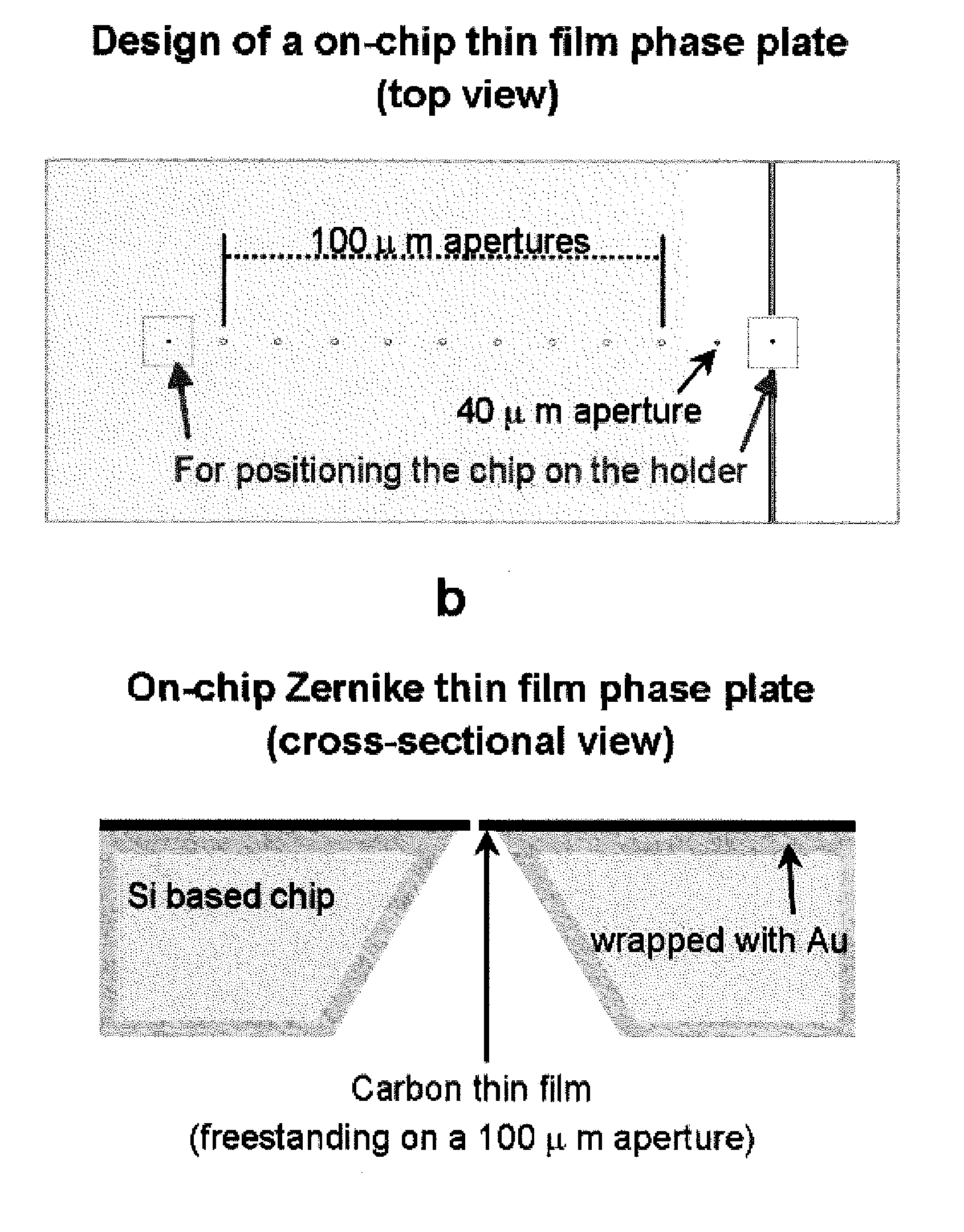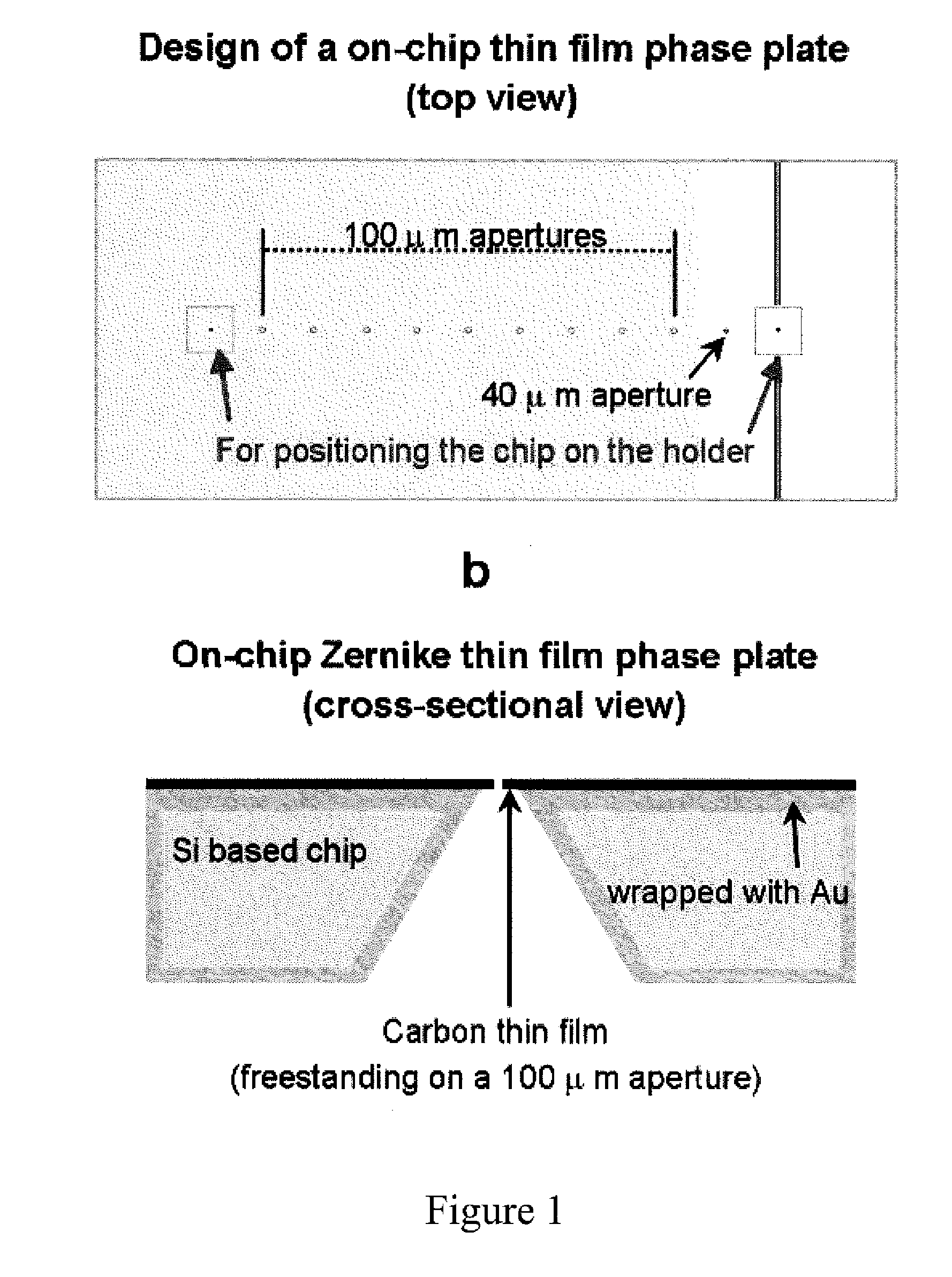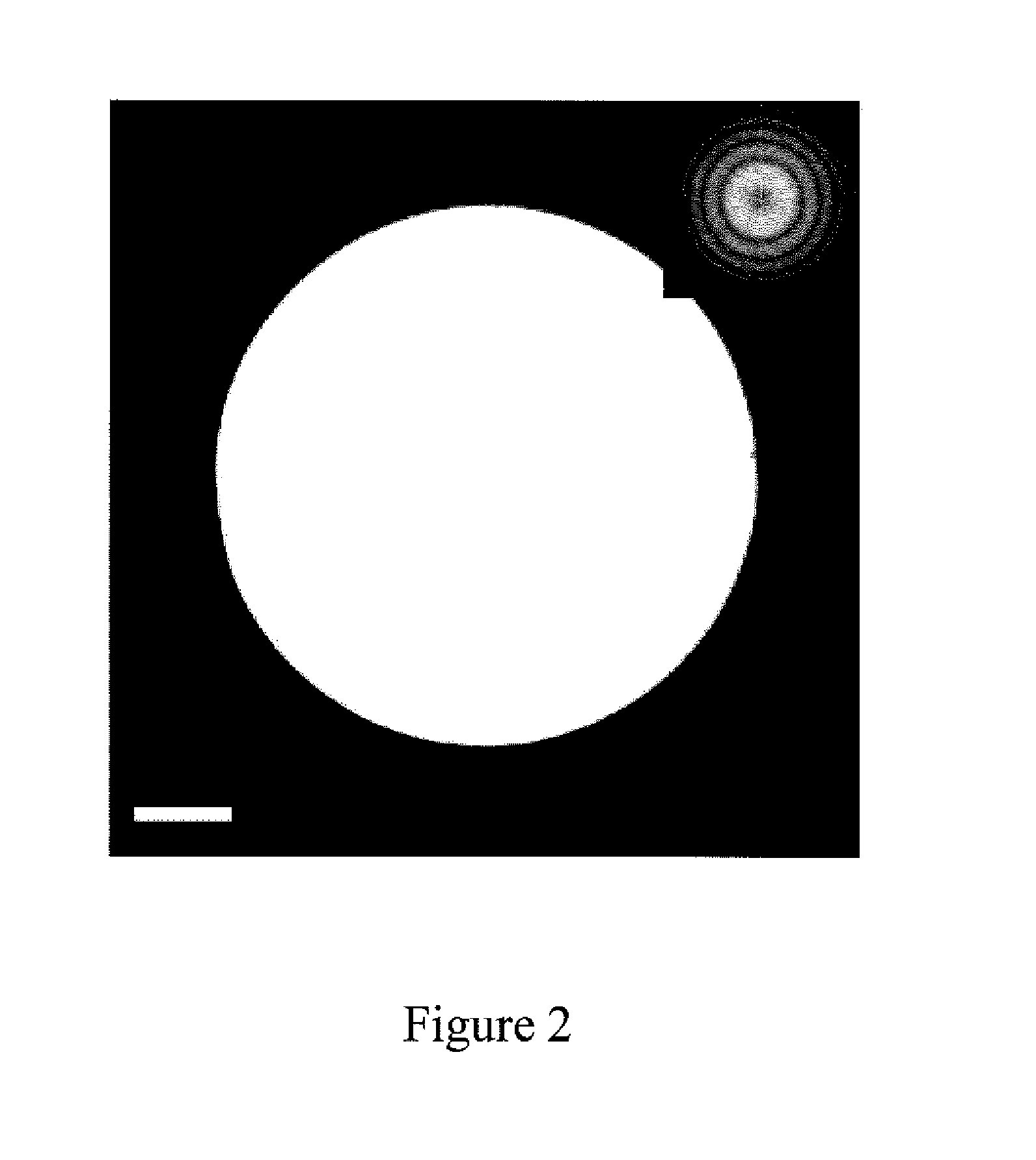On-chip thin film zernike phase plate and applications thereof
a thin film, phase plate technology, applied in the direction of material analysis using wave/particle radiation, instruments, nuclear engineering, etc., can solve the problems of significant loss of resolution, not precluding the major advantage of characterizing nano-structures of organic materials, and complicating image interpretation, so as to achieve effective release of charging results, prolong life, and stable performance
- Summary
- Abstract
- Description
- Claims
- Application Information
AI Technical Summary
Benefits of technology
Problems solved by technology
Method used
Image
Examples
example 1
TEM Image Drifting of the Phase Plates with and without Complete Conductive Layer Coating
[0060]A standard TEM specimen with Au nanoparticles (particle size <5 nm) was used to study the drifting pattern of TEM imaging. The standard specimen of Au was used to avoid the image drifting caused by the sample charging itself. It was found that when the phase plate chip was not loaded, the TEM image drifted towards the same direction with a drifting rate of ˜2 nm / min, and this is the mechanical drifting of the TEM system itself. Such a drifting rate is within the acceptable mechanical drifting range of the TEM system.
[0061]With the on-chip phase plate of the present invention in position, the imaging drifting rate and pattern were the same as those observed by the TEM system without the phase plate. However, the image drifting pattern is rather different if the substrate was poorly fabricated, in which the substrate was only coated with a top layer of Au instead of a 3-dimensional Au coatin...
example 2
Observation of Organic Material
[0064]With the on-chip thin film Zernike phase plate of the present invention, many organic devices, including OLED and polymer solar cell specimens, can be observed by TEM. FIG. 6(a) shows an in-focus TEM phase image of a photoactive layer of P3HT / PCBM (1:1) blend, which is taken by using the phase plate of the present invention; and FIG. 6(b) shows an in-focus TEM phase image of the same specimen, which is taken without using the phase plate of the present invention. The TEM specimen used in FIG. 6 has a thickness of ˜160 nm, and was prepared in the same way as a polymer layer fabricated in a solar cell device. The photoactive layer retrieved from a bulk heterojunction polymer solar cell device also can be used. In FIGS. 6(a), some spaghetti-like features are found, which are invisible in the in-focus TEM image without using a phase plate (see FIG. 6(b)). It is generally believed that P3HT causes the spaghetti-like phase. Conventionally, the TEM phot...
example 3
Observation of Biological Material
[0069]Besides characterizing organic devices, the TEM system of the present invention also has great potential in applications in biological fields. With its stable performance, imaging fine structures of biological samples without going through complicated sample preparation process, such as staining, becomes possible. FIG. 8(a) shows the in-focus TEM image of an unstained Escherichia coli (E. coli) specimen, which was obtained by using the on-chip phase plate of the present invention. For comparison, the same unstained E. coli specimen was observed using the same TEM imaging conditions but without adopting the phase plate of the present invention. The resulting image is shown in FIG. 8(b). The pili surrounding the cell envelope can be clearly seen in the phase image (FIG. 8(a)), but they cannot be identified in FIG. 8(b). The image contrast of the cell envelope itself is also enhanced in the phase image. The FFT images of FIGS. 8(a) and 8(b) are s...
PUM
 Login to View More
Login to View More Abstract
Description
Claims
Application Information
 Login to View More
Login to View More - R&D
- Intellectual Property
- Life Sciences
- Materials
- Tech Scout
- Unparalleled Data Quality
- Higher Quality Content
- 60% Fewer Hallucinations
Browse by: Latest US Patents, China's latest patents, Technical Efficacy Thesaurus, Application Domain, Technology Topic, Popular Technical Reports.
© 2025 PatSnap. All rights reserved.Legal|Privacy policy|Modern Slavery Act Transparency Statement|Sitemap|About US| Contact US: help@patsnap.com



